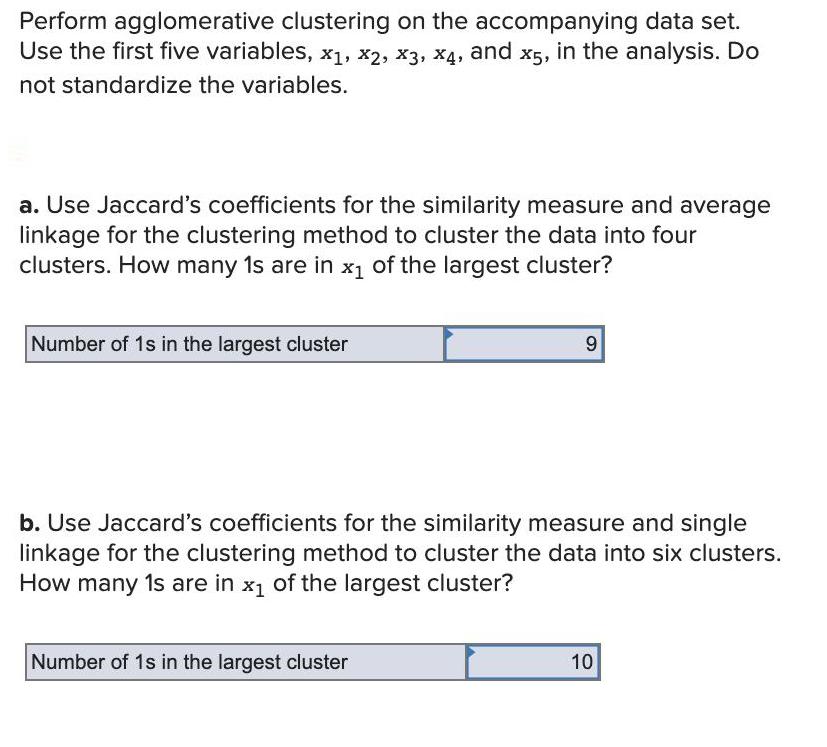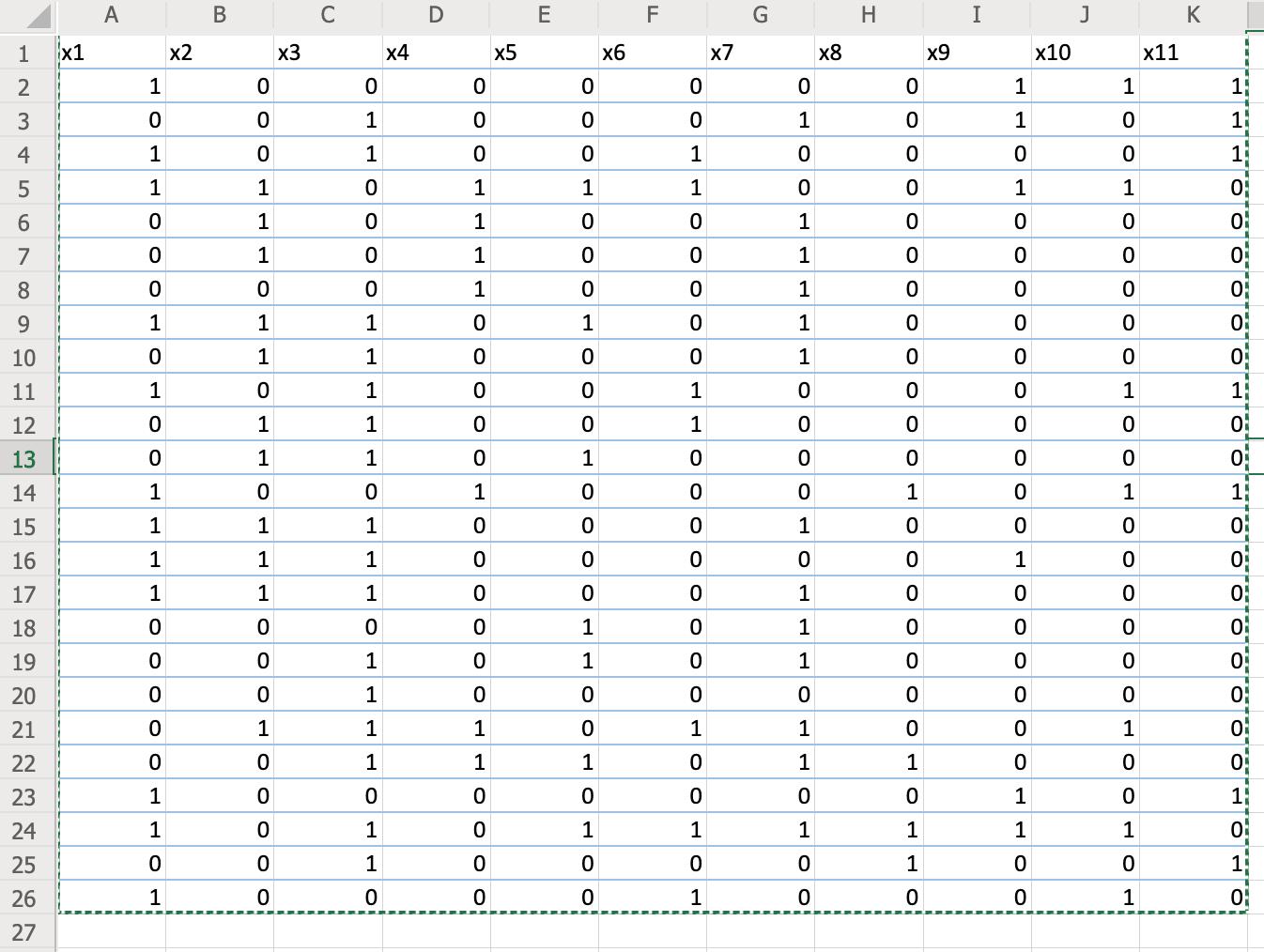Answered step by step
Verified Expert Solution
Question
1 Approved Answer
Perform agglomerative clustering on the accompanying data set. Use the first five variables, x1, x2, x3, x4, and x5, in the analysis. Do not


Perform agglomerative clustering on the accompanying data set. Use the first five variables, x1, x2, x3, x4, and x5, in the analysis. Do not standardize the variables. a. Use Jaccard's coefficients for the similarity measure and average linkage for the clustering method to cluster the data into four clusters. How many 1s are in x1 of the largest cluster? Number of 1s in the largest cluster b. Use Jaccard's coefficients for the similarity measure and single linkage for the clustering method to cluster the data into six clusters. How many 1s are in x1 of the largest cluster? Number of 1s in the largest cluster 10 A C E F H. I K 1 x1 x2 x3 4 x5 6 x7 X8 x9 x10 x11 1 1 1 1 3 1 1 1 15 4 1 1 1 1 1 1 1 1 6. 1 1 1 7 1 1 1 8 1 1 9 1 1 1 1 10 1 1 1 11 1 1 1 15 12 1 1 1 13 1 1 1 14 1 1 1 1 15 15 1 1 1 16 1 1 1 17 1 1 1 1 18 1 1 19 1 1 1 20 1 21 1 1 1 1 1 1 22 1 1 1 1 23 1 1 11 24 1 1 1 1 1 1 1 1 25 1 1 26 1 1 1 27 O O o O O O O O o o O O o O O
Step by Step Solution
★★★★★
3.51 Rating (164 Votes )
There are 3 Steps involved in it
Step: 1
Clustering starts by computing a distance between every pair of units that you want to cluster A dis...
Get Instant Access to Expert-Tailored Solutions
See step-by-step solutions with expert insights and AI powered tools for academic success
Step: 2

Step: 3

Ace Your Homework with AI
Get the answers you need in no time with our AI-driven, step-by-step assistance
Get Started


